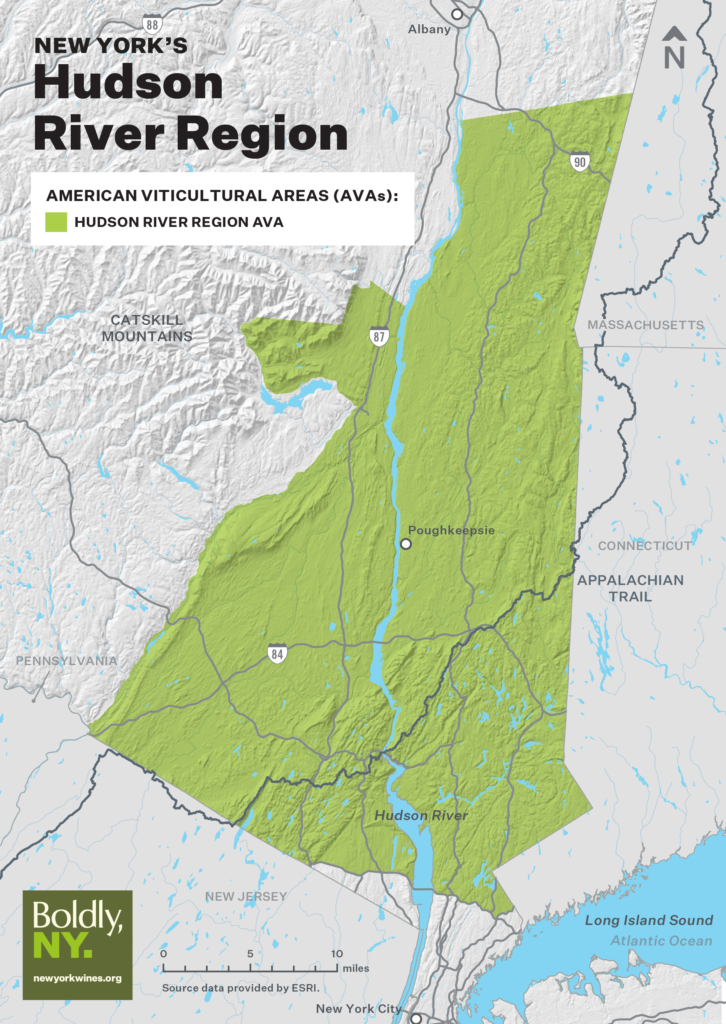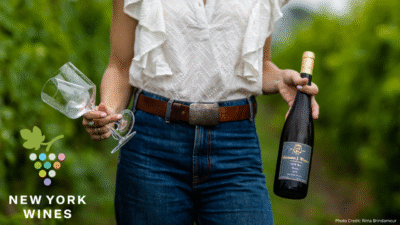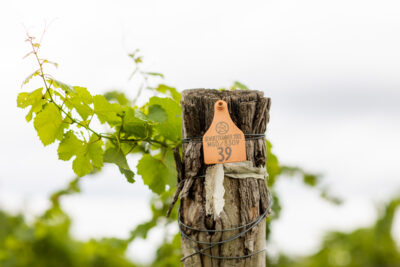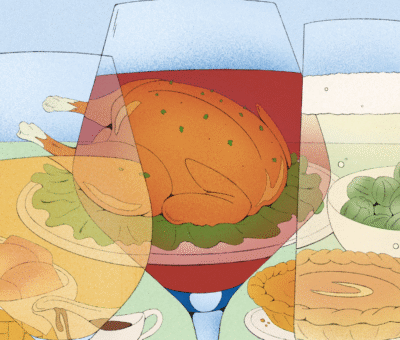
The Hudson Valley includes the Hudson River Region AVA (south of the New York State capital Albany) and the Upper Hudson AVA (north and west of Albany). The valley is characterized by long-standing agricultural and viticultural history; the diverse alluvial soils and microclimates found throughout the corridor of plains and hills; and the resulting 315 mile long Hudson River.
One of the oldest and most historically important wine areas in the US, the Hudson River Valley can be credited for pioneering many of the innovations that helped the NY wine industry grow.
Geology
The Hudson is contained by the Taconic and Berkshire Mountains to the east of the river; the Catskill Mountains and the Palisades cliffs to the west; and the Adirondack Mountains to the north. The Hudson Highlands span both sides of the river.
The river is tidal, changing directions twice daily, with influence as far north as the Federal Dam in Troy, NY (just north of Albany). Heading south from there, the river maintains a depth of at least 30’, dredged as a shipping route. Some areas however are much deeper – with the deepest part of the Hudson reaching 202’, called “Worlds End” near the US Military Academy.
The Hudson River is sometimes referred to, in geological terms, as a “drowned river”. The rising sea levels after the retreat of the most recent ice age drowned the coastal plain and brought salt water well above the mouth of the river. The former riverbed is clearly delineated beneath the waters of the Atlantic Ocean, extending to the edge of the continental shelf.
Along the river, the Palisades are of metamorphic basalt, the Highlands are primarily granite and gneiss, and from Beacon to Albany, shales and limestones. Ultimately, glaciation has made for very diverse alluvial soils.
Climate
The climate of New York’s Hudson Valley is generally representative of humid climates in the northeastern United States, but the topography outlined above plays a large role, leading to a wide range of microclimates. Summers are pleasant, and the diurnal range helps cool the mid-day heat. Winters are cold and sometimes severe. Precipitation is relatively well-distributed throughout the year, with most falling during warmer months via thunderstorms. Snowfall is highly variable based on elevation. The Hudson Valley area enjoys abundant sunshine compared to the rest of New York State. Despite lying between areas of higher elevation to the west and east, the area seldom experiences long periods of cloud cover or accumulated smog.
While humidity and precipitation may be somewhat higher than surrounding areas, it’s a worthy trade-off for warmer nights and a less extreme annual temperature range.
“The Hudson Valley’s climate changes rapidly as one goes north up the Hudson Valley and away from the river’s shores,” wrote J Stephen Casscles in the book, Grapes of the Hudson Valley And Other Cool Climate Regions of the United States and Canada. “This variation in temperature is partly due to the diversity in physical features that separate the land from the river and the proximity of the Catskill and Berkshire mountains.[…] Overall, the influence of the river, which is really a broad tidal estuary or fjord, is most favorable to growing fruit crops.”
“The lowlands of the Hudson Valley receive somewhat less rainfall when compared to the rest of New York because when moisture is carried inland from the Atlantic Ocean, it falls as rain over the Hudson Highlands and the mountains and highlands of New England. Another desirable characteristic of the Hudson Valley’s rainfall patterns is that, on average, July rains are more plentiful than in the rest of the state, but reduced in September and October during the critical harvest season. This relatively light rainfall in the fruit’s maturing months is more marked in the Hudson Valley than in other New York grape-growing regions.”
In the fruit-producing areas of the Hudson Valley, summer temperatures are high, with an average of approximately 74° (Beacon, NY) thanks to warm southerly winds. In winter, the average low temperature is approximately 21°, with northerly winds out of Canada constraining the region’s primary grapes to cold-hardy varieties.
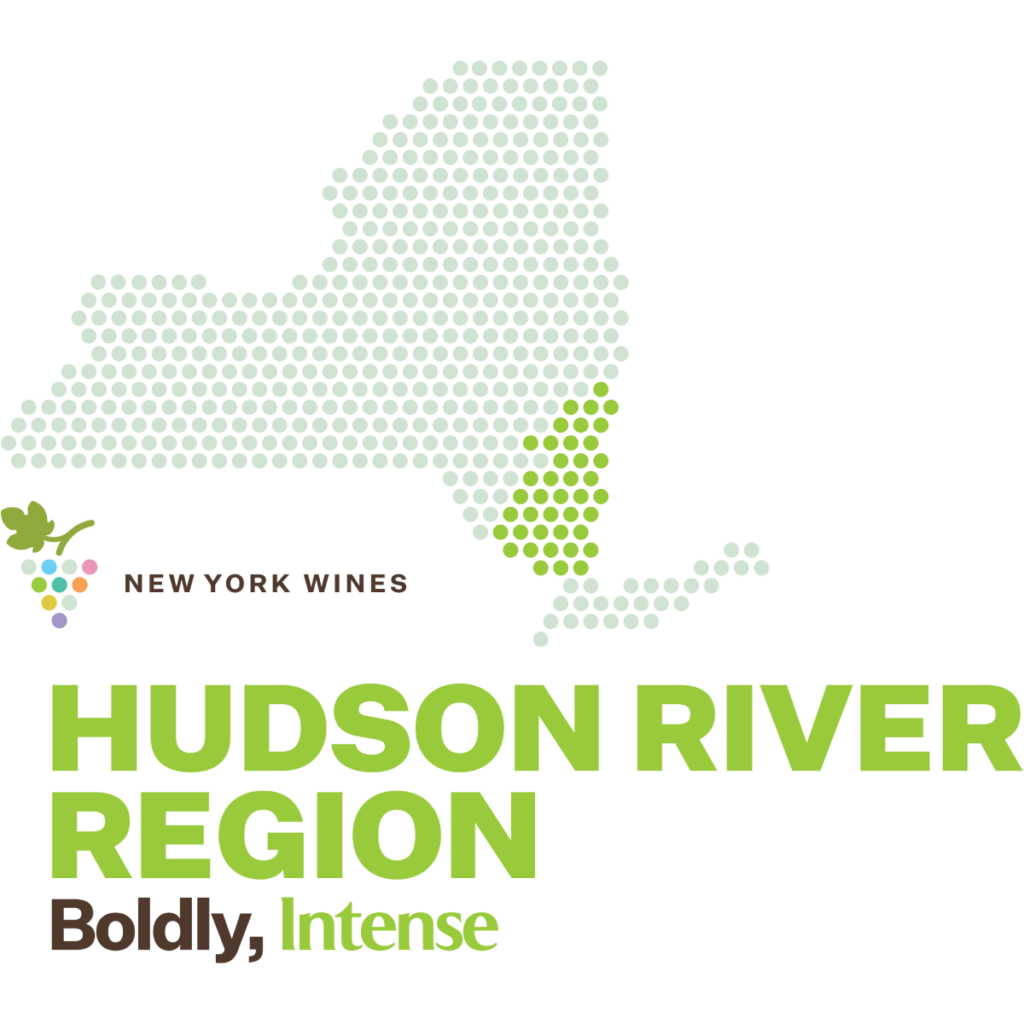
Quick Facts
About the Hudson River Region
- Established June 4, 1982
- 59 Wineries
- 190 Day Growing Season
- 79 Farms, 446 Acres of Vineyard
- Hybrids, Vitis vinifera
Region map
Explore More New York Wine Country:
